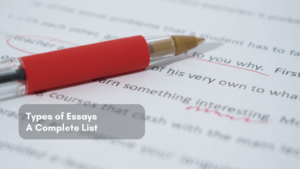Outlines offer clear roadmaps for any creative writing, including a great speech. A well-structured outline helps you organize your ideas and maintain coherence. However, the meticulous process required for writing a great outline demands a deep understanding of the topic and a clear vision of the desired outcome. Here’s a comprehensive guide used by our professionals to write a persuasive speech outline. They also help students with their persuasive essay assignments.
Choosing a Topic for Your Persuasive Essay
Topic selection is one of the most challenging aspects of writing a persuasive speech. However, by focusing on the following basics, you can make the process less daunting.
- Who: Know your ideal audience and why they should care about the topic you want to address. How can you influence their thinking to align with your desired outcome?
- What: What topics interest you? What topics interest your audience? Where should you focus your research?
- When: How long should your presentation be?
- Why: What’s the purpose of the speech? Why do you care about the topic? Why should the audience react or change their thinking based on this speech?
- Where: Where do you intend to deliver your speech? What tools or equipment do you need to succeed?
Persuasive Essay Outline: Comprehensive Guide
A great outline is the basis of a persuasive speech. It makes you organize your thoughts, making writing easier. Here’s a comprehensive speech outline used by our essay professionals.
- Title: Choose a clear and attention-grabbing topic that reflects the purpose of your speech.
- General Purpose: State the goal of your speech (persuade, inform, entertain, or inspire the audience)
- Specific Purpose: What specific outcome do you intend to achieve with the speech? Describe the action or understanding you expect from the audience.
- Thesis Statement: Write a one-sentence thesis statement summarizing the main argument or position you intend to advocate in the speech.
Introduction
- Attention Grabber: Use a compelling quote, startling statistics, or engaging anecdote to pique the audience’s interest.
- Topic and Audience Relevance: Establish the topic and state why it is important to the audience.
- Credibility: Highlight your expertise or experience on the topic to enhance persuasiveness and keep them engaged.
- Review of Main Points: Offer a precise preview of the points you intend to discuss in the speech.
Body
- Transition: Use an appropriate transition word or phrase to usher the audience into your persuasive essay.
- Point 1 (Need for Action):
- Description of a problem: Give a vivid description of a problem or an issue you’re addressing. Ensure it’s relatable and compelling.
- Effects of the problem: Highlight the negative consequences or impact of the problem to emphasize why it’s worth addressing.
- Supporting evidence: Use concrete data, statistics, anecdotes, or reliable expert opinions to back up your claims on the significance of the problem.
- Description of problem: Introduce a second aspect of the problem to reinforce its magnitude and the importance of addressing it.
- Effects of a problem: The purpose of a persuasive essay is to Describe additional consequences or implications of the problem or issue you’re addressing.
- Supporting evidence: Bolster the claim of the adversity of the problem with more evidence and examples, reinforcing the burning need for action.
- Transition: Move smoothly to part two, using the appropriate transition word or phrase.
- Point 2 (Solution):
- Description of solution: Outline the proposed solution or approach to the problems or issues.
- How to satisfy needs: Demonstrate a practical approach to how the proposed solution satisfies the identified needs or resolves the problems.
- Implementation: Give an overview of how the solution will be implemented.
- Plan of Action:
Step 1. Break down the implementation plan into clear, manageable steps for a feasible and logical approach.
Step 2. Detail the action plan further, maintaining a clear sequence and guidance on how to proceed.
Step 3. Conclude with a final step on implementation, offering a comprehensive plan for achieving the desired outcome.
Conclusion
- Transition Sentence to the conclusion: This should be one sentence that smoothly guides the audience into the final segment of your speech.
- Summary of Main Points: Summarize the main points clearly in one or two sentences. The basis of a Persuasive Essay is to reinforce the core message clearly and concisely.
- Call for Action: Remind your audience about what’s expected of them in response to your argument.
- Closing Statement: Close with a memorable statement that summarizes the essence of your message, leaving a lasting impression.
Request Help Creating a Persuasive Speech Outline
Design your roadmap to persuasion on any topic using our persuasive speech outline solution. Request help today for an opportunity to collaborate with experienced speech-writing professionals on selecting a topic, creating a compelling outline, and writing a winning speech.




